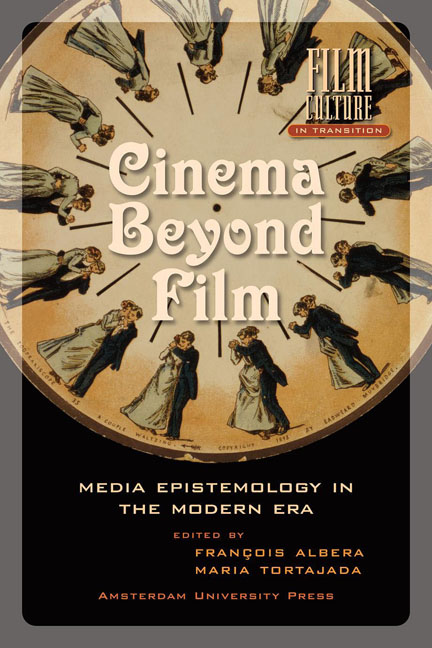The Cinematograph versus Photography, or Cyclists and Time in the Work of Alfred Jarry
Published online by Cambridge University Press: 22 January 2021
Summary
At the end of the nineteenth century, speed was both in vogue in popular culture and at the heart of scientific research. Insight was gained into movement by measuring speed variation and by observing the various positions required by locomotion. The energy spent in performing various tasks was calculated, sometimes forcing people’s bodies to their utmost limits. It was fashionable to organise races, of bicycles or trains for example, enabling one to compare speeds and put the machines – the flagships of industry – through their paces. Various fairground contraptions were constantly competing to be the best, such as switchbacks looping the loop at breakneck speeds. Speed as a scientific object and as a social phenomenon fascinates – accidents themselves have become spectacles of modernity – because our understanding of it is based on the two concepts of time and space that were constantly explored and questioned at the turn of the century. Speed was central to the paradoxes explored by H.G. Wells in his literary laboratory via the contemporary popular theme of the fourth dimension. Speed was also a considerable contributor to the futuristic novel, which put new techniques to the test of the imaginary world. While Etienne-Jules Marey brought the physiologist’s approach to the questions of movement, time and space, with the invention of the chronophotographic method and by breaking down movement captured by means of photography, Henri Bergson took a stand against the scientific viewpoint in the name of a particular experience of time and the intuition of duration. Time and space were no longer a priori data but were used or relativised according to notions of measurement, experience, perception or intuition. Scientists, philosophers and writers worked on fleshing out these notions.
Cinema and photography lie at the centre of these questions. When Marey made chronophotography a scientific method – thus defining some of the conditions that made cinema possible – it was by fixing the time variable, by imposing a regular interval between each shot. When Bergson defined the functioning of science, it was by building up the ‘cinematographic model’ of thought. When Alfred Jarry brought photography and cinema into his chronicles or novels, it was to tackle the paradoxes of time. It is hard to imagine a more revealing theme than the bicycle race, with the speed records it involves, to put cinema and photography to the test in their capacity to model the concept of time.
- Type
- Chapter
- Information
- Cinema Beyond FilmMedia Epistemology in the Modern Era, pp. 97 - 114Publisher: Amsterdam University PressPrint publication year: 2012

